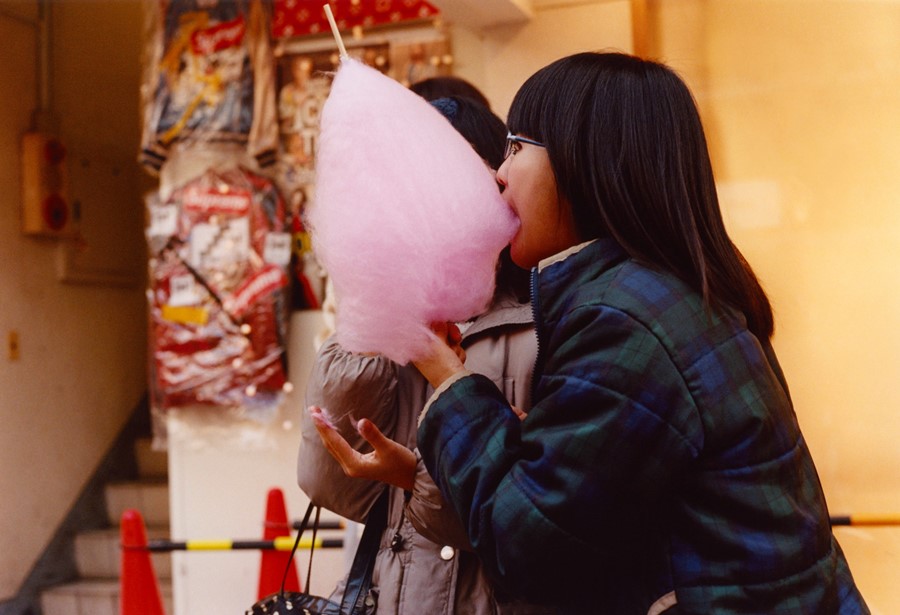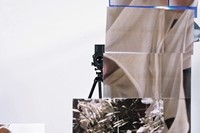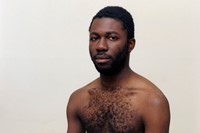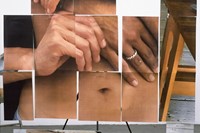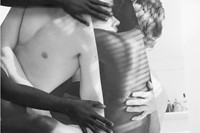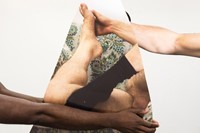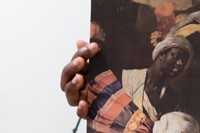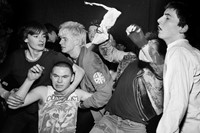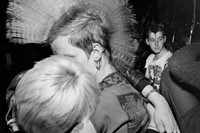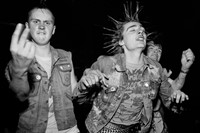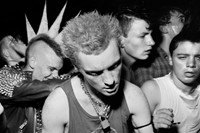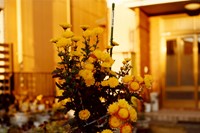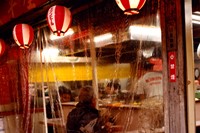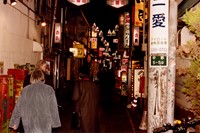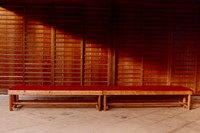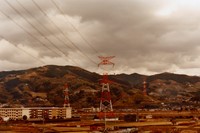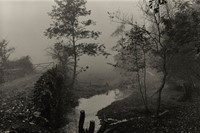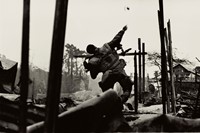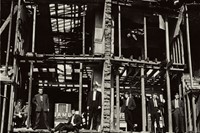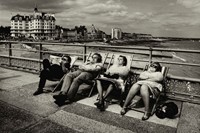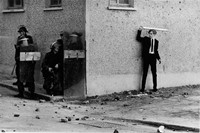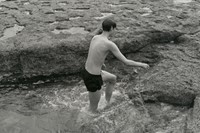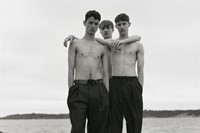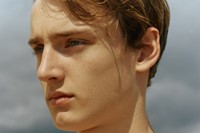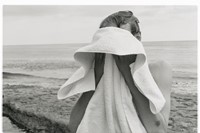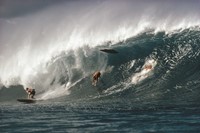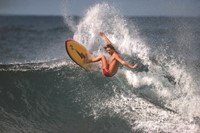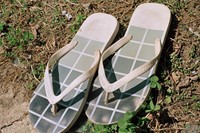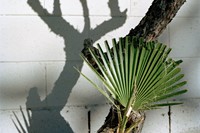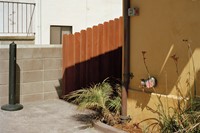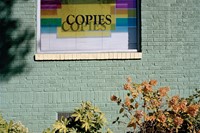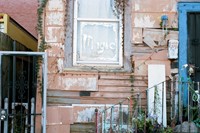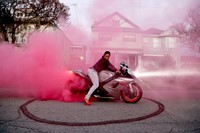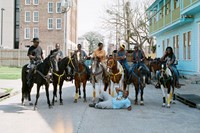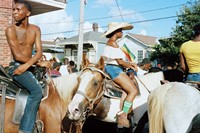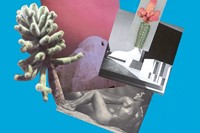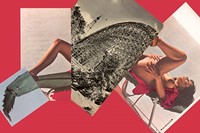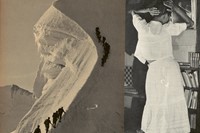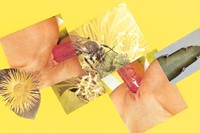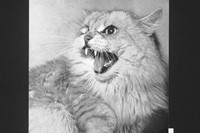From Chris Killip’s documentary of a 1980s punk club to Lucie Rox’s journey around Japan, April’s best photo books allow a visual escape from isolation
Paul Mpagi Sepuya, published by Aperture and the Contemporary Art Museum, St Louis
LA-based photographer Paul Mpagi Sepuya’s recent self-titled book was published to accompany a major solo exhibition that closed in March. (Another solo exhibition in Los Angeles, A conversation about around pictures, is open by appointment only, and was due to run until April 25.) Paul Mpagi Sepuya charts a decade of the photographer’s uniquely intimate practice, which sees him employ mirrors, collage techniques and props in his studio to create portraits of himself, friends, lovers, and acquaintances. “My process always involves looking back – looking and re-looking and recombining material that can always be brought back into the studio and transformed,” Sepuya said in a recent conversation with designer Grace Wales Bonner, who contributed an essay to this book.
The Station by Chris Killip, published by Steidl
“In 1985, I was photographing nightlife venues in and around Newcastle when someone told me about The Station in Gateshead. I visited at the first available opportunity and was amazed by the energy and feel of the place,” photographer Chris Killip recently told Another Man of how his new book, The Station, first came about. The publication brings together photos Killip took in underground punk club The Station during the 1980s, and is a celebration of the venue’s unique magic. Left untouched for years in a box of contacts in the photographer’s studio, the spirited black and white photographs Killip took inside The Station document a bygone era of nightlife.
SIGNS by Lucie Rox, self-published
“I think I’m always drawn to the quiet, soft and sometimes sinister,” says photographer Lucie Rox. “I like what happens in the shadows and seeing the aftermath of human presence – a sign of what has happened before I was there, that the viewer and I can only imagine.” Rox’s self-published zine is a photographic diary of a two-week trip to Japan, where the image-maker captured quiet streets and locals. A special edition of SIGNS – which comes with two prints – is available now, with 50 per cent of proceeds going to Solace Women’s Aid emergency fund, which is working to protect victims of domestic abuse during lockdown.
Don McCullin, published by Aperture
Acclaimed photographer Don McCullin offers rare insight into some of his most significant images in the new issue of Another Man – the issue’s guest-editor, Jo-Ann Furniss, cites McCullin as one of her heroes. “I do not want people to walk past one of my pictures without realising,” he says. “They’re meant to stop you and make you look and make you feel. My background played a major role in my feeling towards the tragedies that I saw, the injustices, the murders, the child starvation and poverty.” McCullin’s extraordinary Tate retrospective, staged at Tate Britain last year, was due to open in Liverpool at the beginning of June. Aperture’s revised edition of McCullin’s extraordinary 2001 monograph was published in 2015, and features contributions from Sir Harold Evans and Susan Sontag.
Claire de Rouen Subscriptions
Independent bookshop Claire de Rouen – run by AnOthermag.com columnist Lucy Kumara Moore – has introduced a subscription package to its online store, where buyers can subscribe to receive new books in the post. The three tiers of subscription range from a book or magazine every two weeks to every month, each a surprise, picked by Claire de Rouen. Perfect for anyone who’s already exhausted all reading material during isolation – plus, ten per cent of all sales are going to Little Village, a London-based charity which provides clothes, toys and equipment for babies and young children.
Dancing Ledge by Yann Faucher, published by The Club of Men Editions
Yann Faucher’s new photo book transports us to the Dorset coastline, where he captured three young men on the county’s beaches at Dancing Ledge – which is also the title of the limited-edition publication. Faucher was inspired to make the photographs in Dancing Ledge after learning about the World War Two landings at Normandy, and the scores of young men who lost their lives on the French beaches. “I decided I would try to gather some young guys – I remember five different people who were having fun at the beach, and the location was very nice – and shoot a story with them,” he explained of his Dorset-shot photos. “Trying to make something nice.”
70s Surf Photographs by Jeff Divine, published by T. Adler Books
A welcome escape from urban isolation arrives with Jeff Divine’s new book 70s Surf Photographs. Taken in California and Hawaii, Divine captures the beginning of the surf scene in the 1970s, when he himself was a keen surfer and worked as photo editor for two of the sport’s most esteemed magazines, Surfer and Surfer’s Journal. “We were so addicted to surfing. It was so deep in our psyche, like nothing else mattered,” Divine told Another Man as the book was published. “Society didn’t get it. We weren’t bad boys – we were wilderness athletes. We were apolitical but we had that back to Mother Nature, health foods, we’re all one psychedelic mindset of the late 1960s and 70s.”
Picture Summer on Kodak Film by Jason Fulford, published by MACK
As featured in our edit of art books to escape into during quarantine, Jason Fulford’s new MACK publication Picture Summer on Kodak Film is full of sun-drenched shots of far away places – Canada, Italy, Japan, Lithuania, Mexico, Nepal, Thailand, USA and Vietnam. Fulford hones in on the details during his travels, from colourful shop signs to shadows cast inside on light-filled afternoons.
Death Magick Abundance by Akasha Rabut, published by Anthology Editions
Akasha Rabut’s debut monograph, Death Magick Abundance, is a study of New Orleans and its subcultures, captured over the course of a decade. The book focuses on the post-Hurricane Katrina generation who rebuilt the city in the wake of the 2005 disaster. “A connection that was made through this trauma with each other. It’s forced them to be really creative. Living through that really inspires people. I feel like they are luminaries,” the photographer told AnOther. “People here live everyday like it’s their last day and that’s beautiful to me.” From portraits of the Caramel Curves and the Southern Riderz – two New Orleans clubs, the former an all-female black motorcycle club, the latter a group of urban cowboys – to photographs of traditional Second Line parades, Death Magick Abundance is an uplifting look at a resilient city.
Handbook of the Spontaneous Other by Aikaterini Gegisian, published by MACK
Tourist catalogues, nature magazines and vintage porn provided material for Aikaterini Gegisian’s compelling collages, set against satisfying coloured backgrounds in her new book Handbook of the Spontaneous Other. The eclectic imagery that Gegisian incorporates into her work dates from the 1960s, 70s and 80s, and the resulting collages range from playful to confronting; the artist’s practice is research-rich and often interrogates ideas of identity.
